WWII Dutch East Indies Campaign British American Pilot Bailout Silk Survival Map Pacific Theater
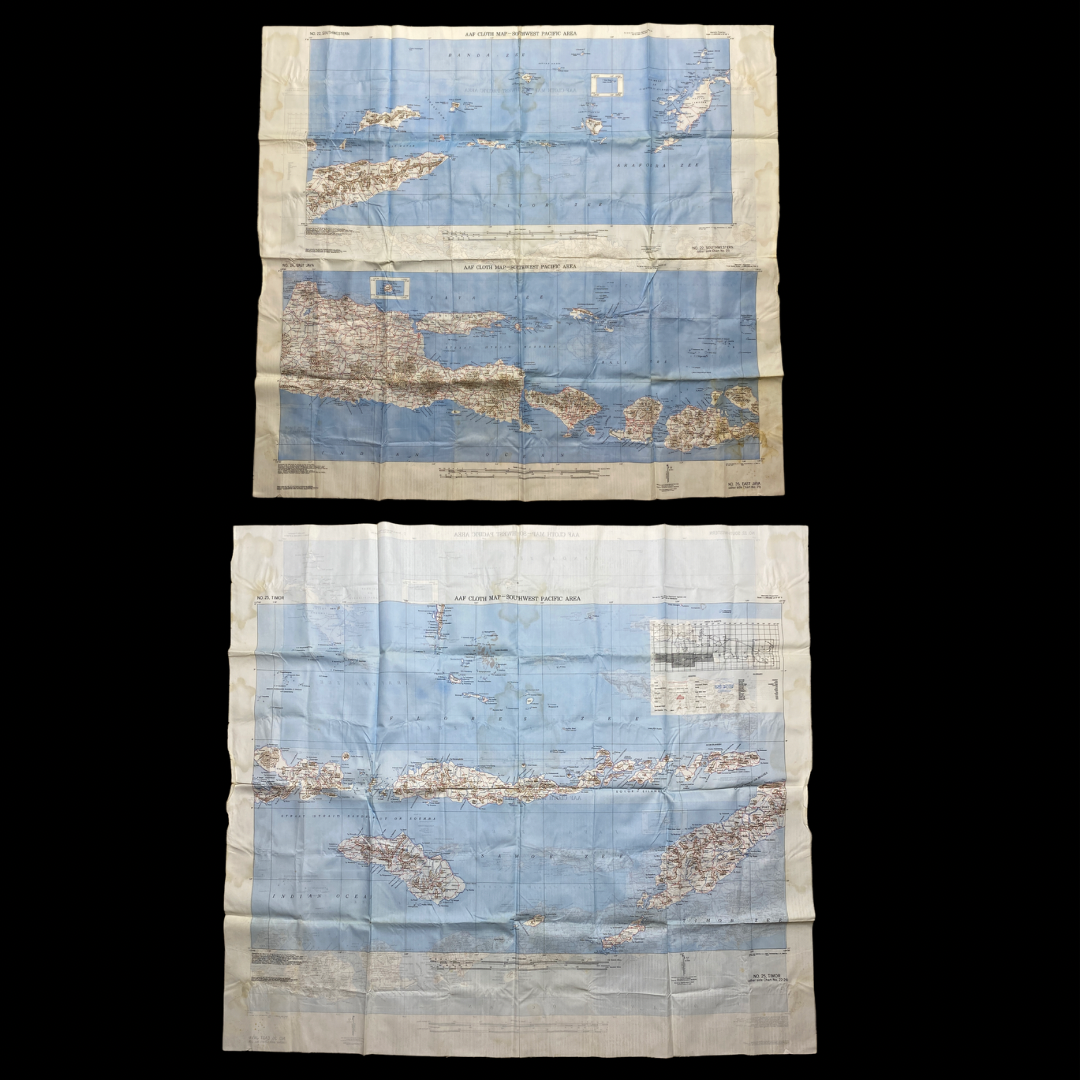
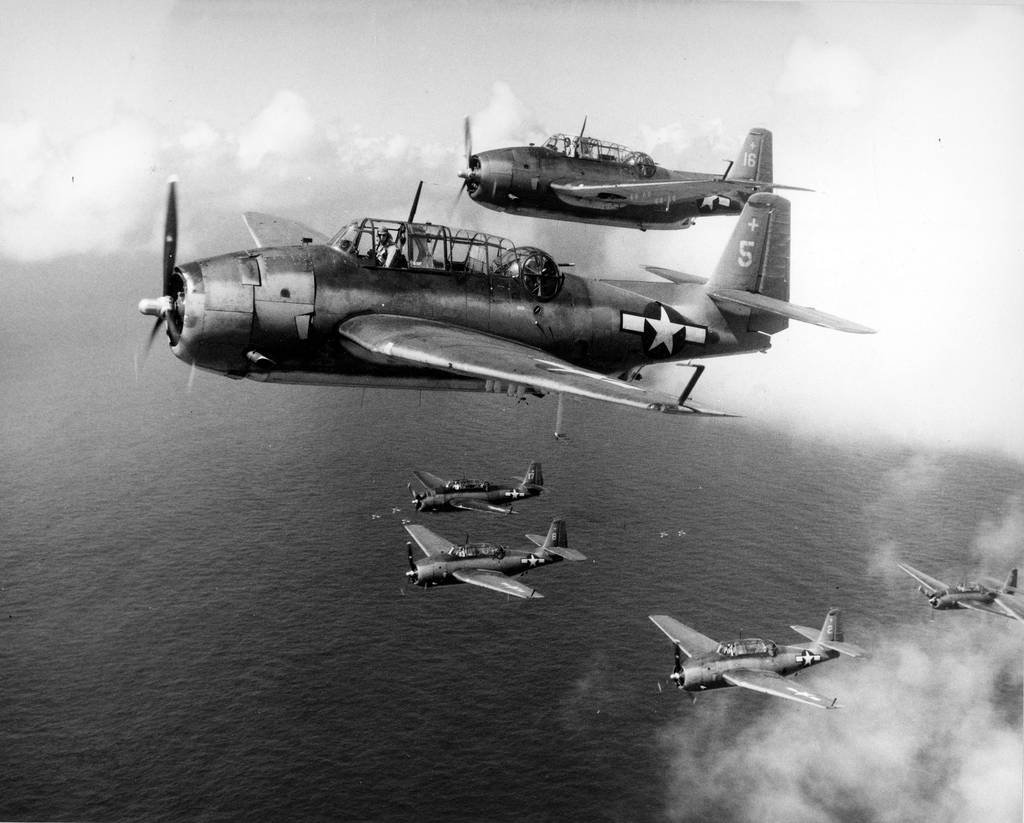
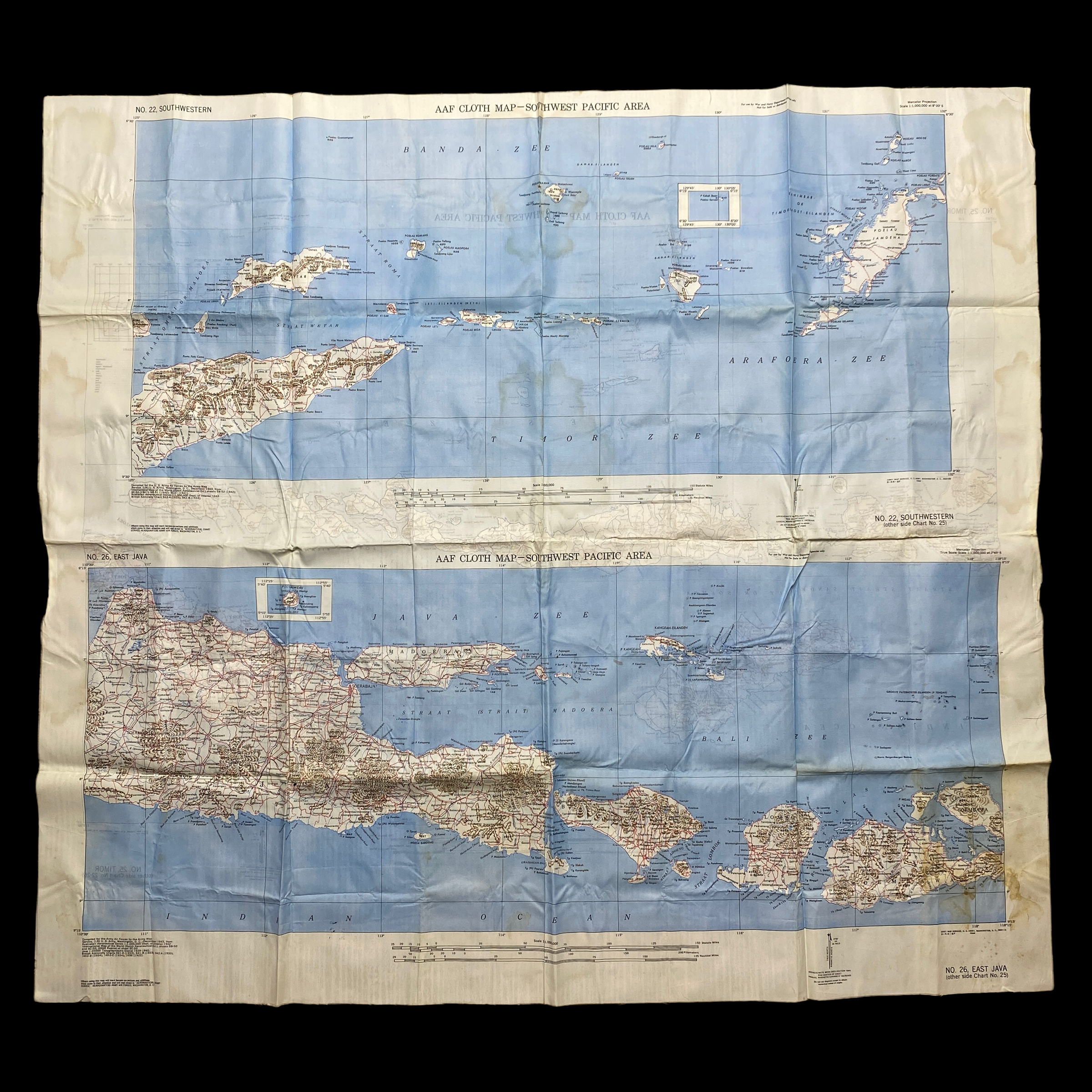
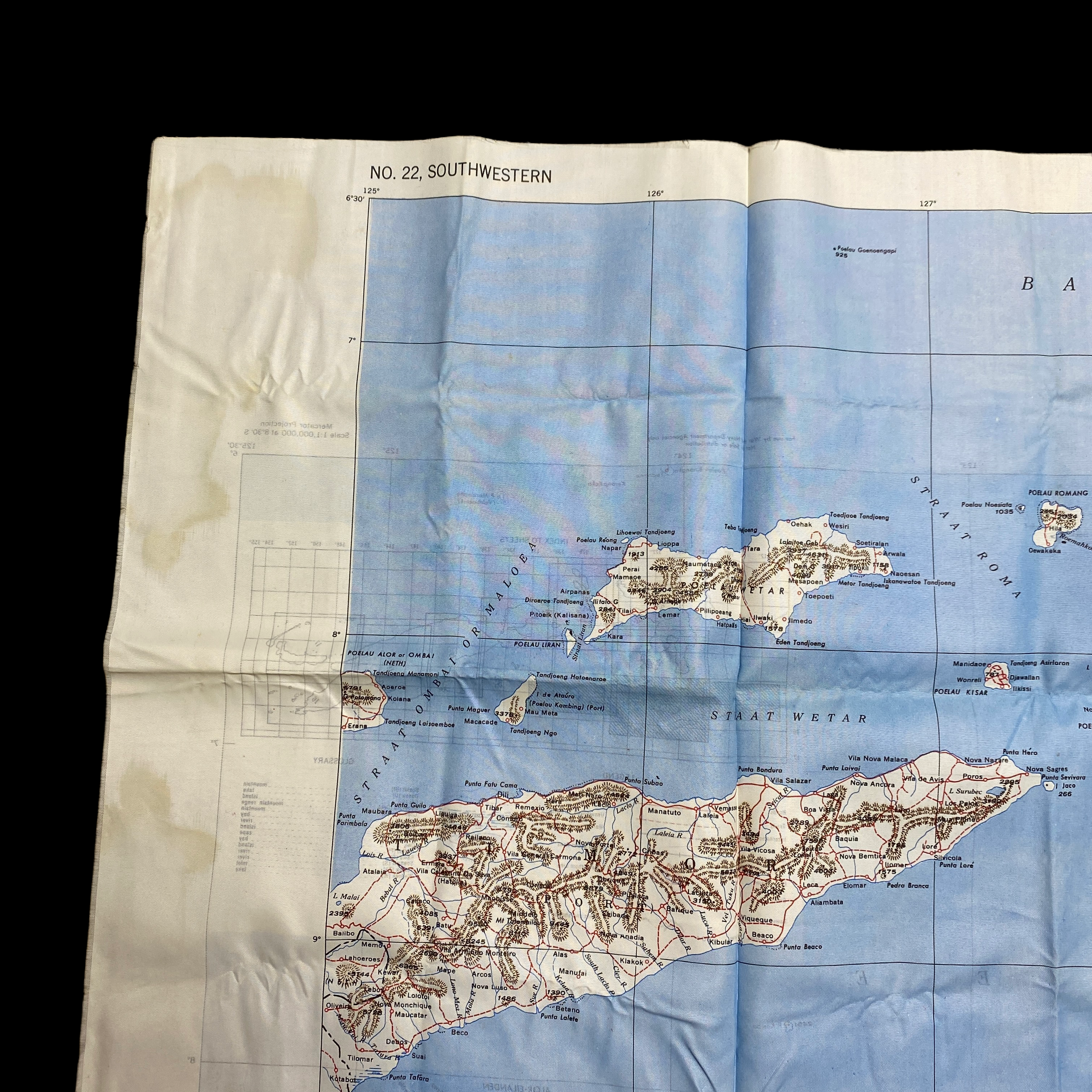



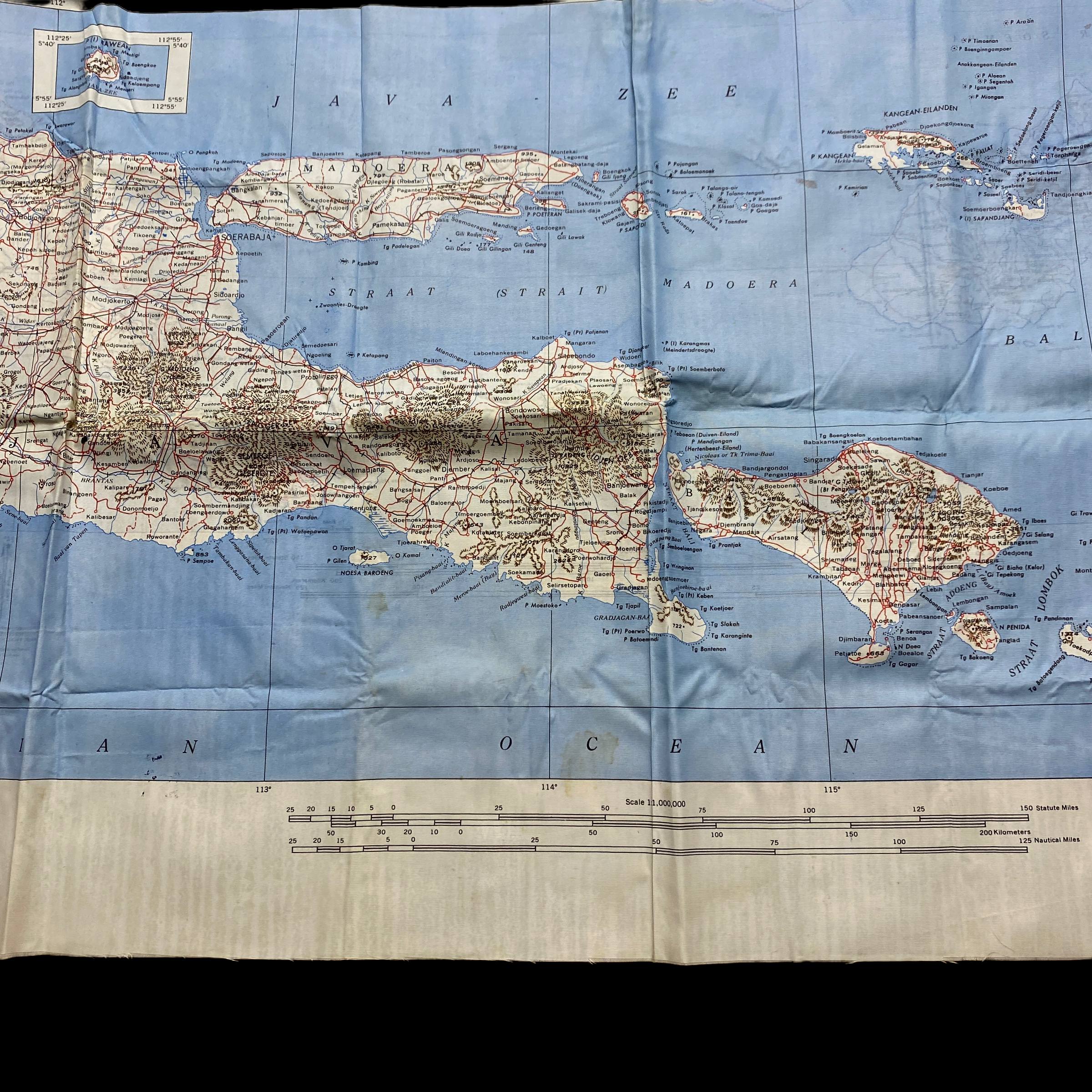
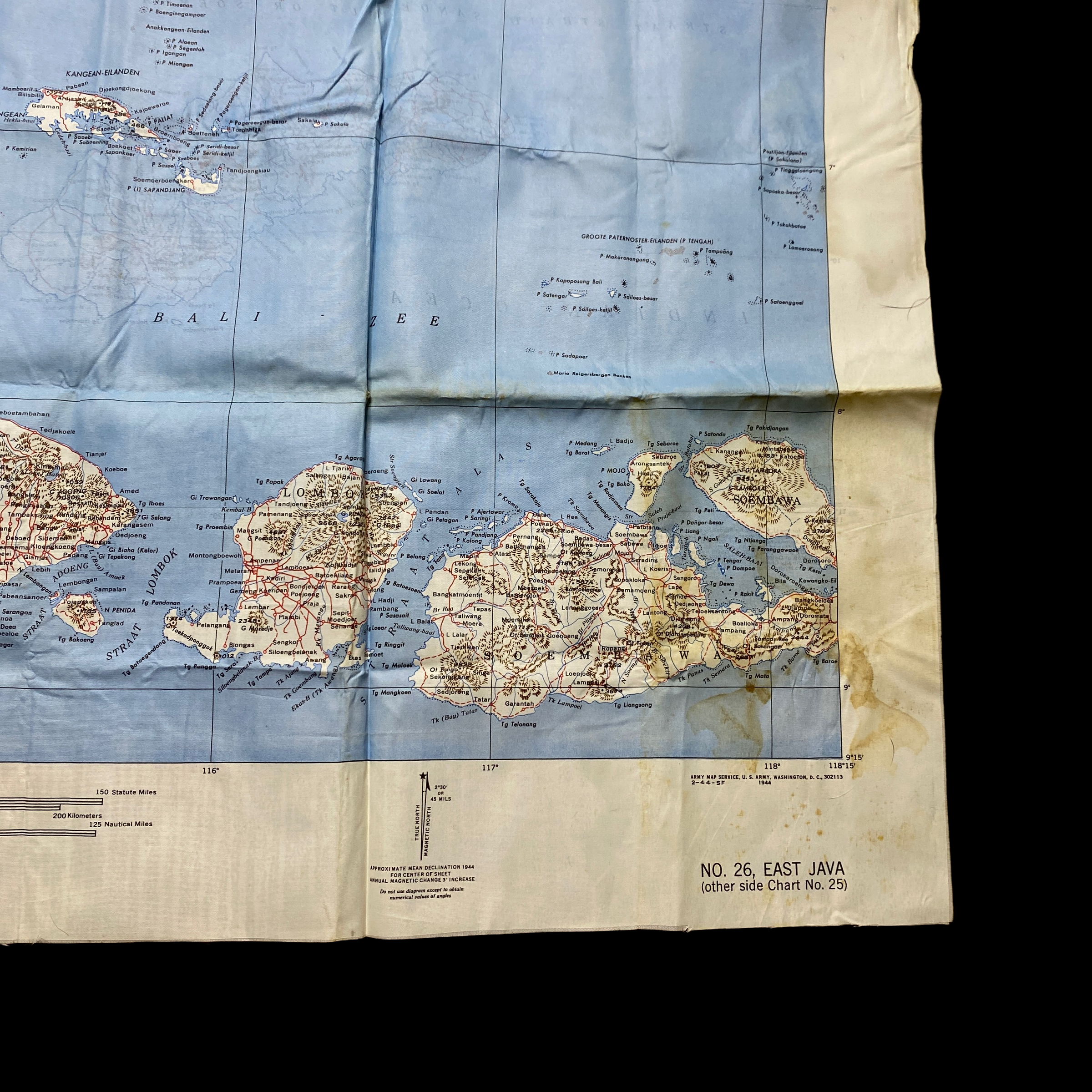


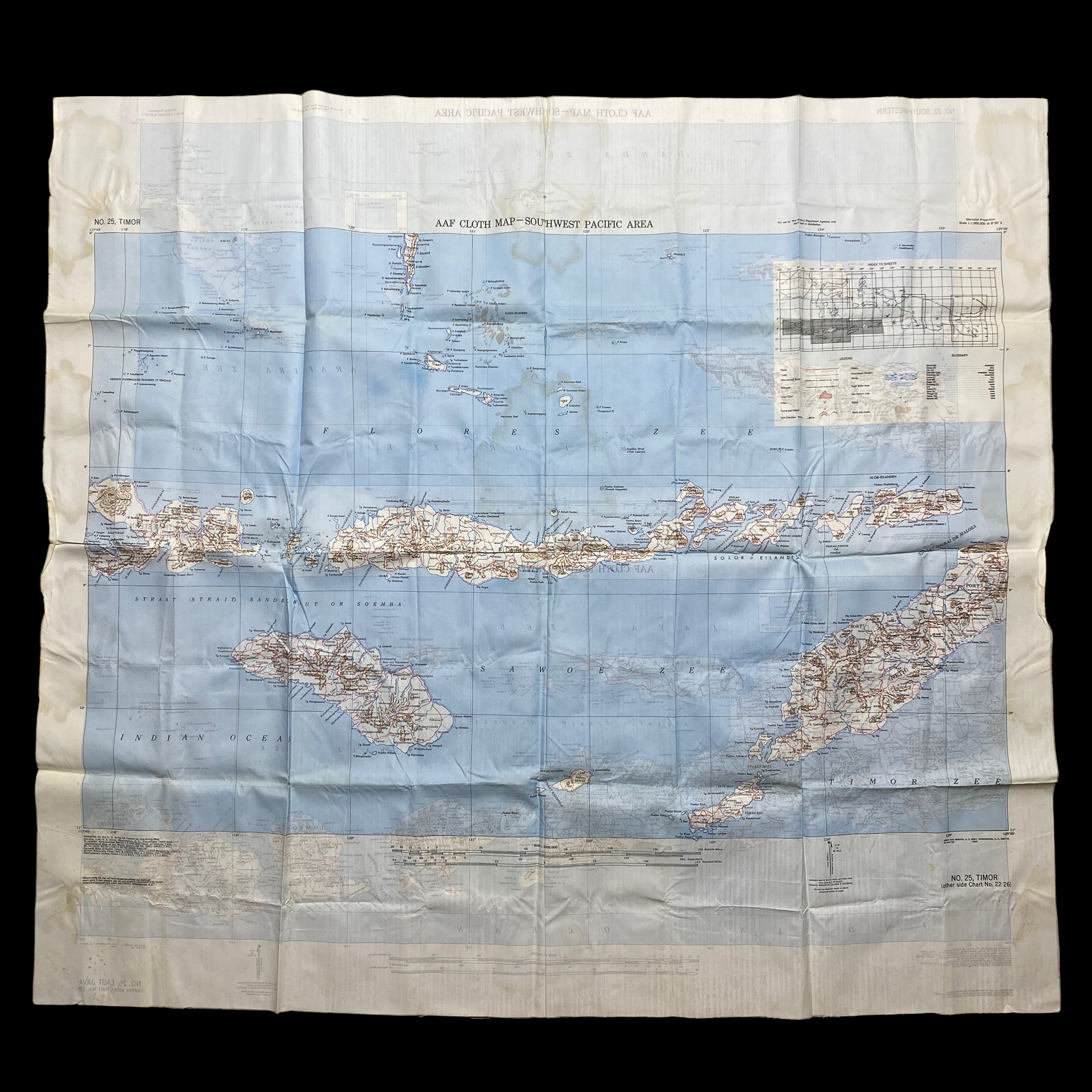
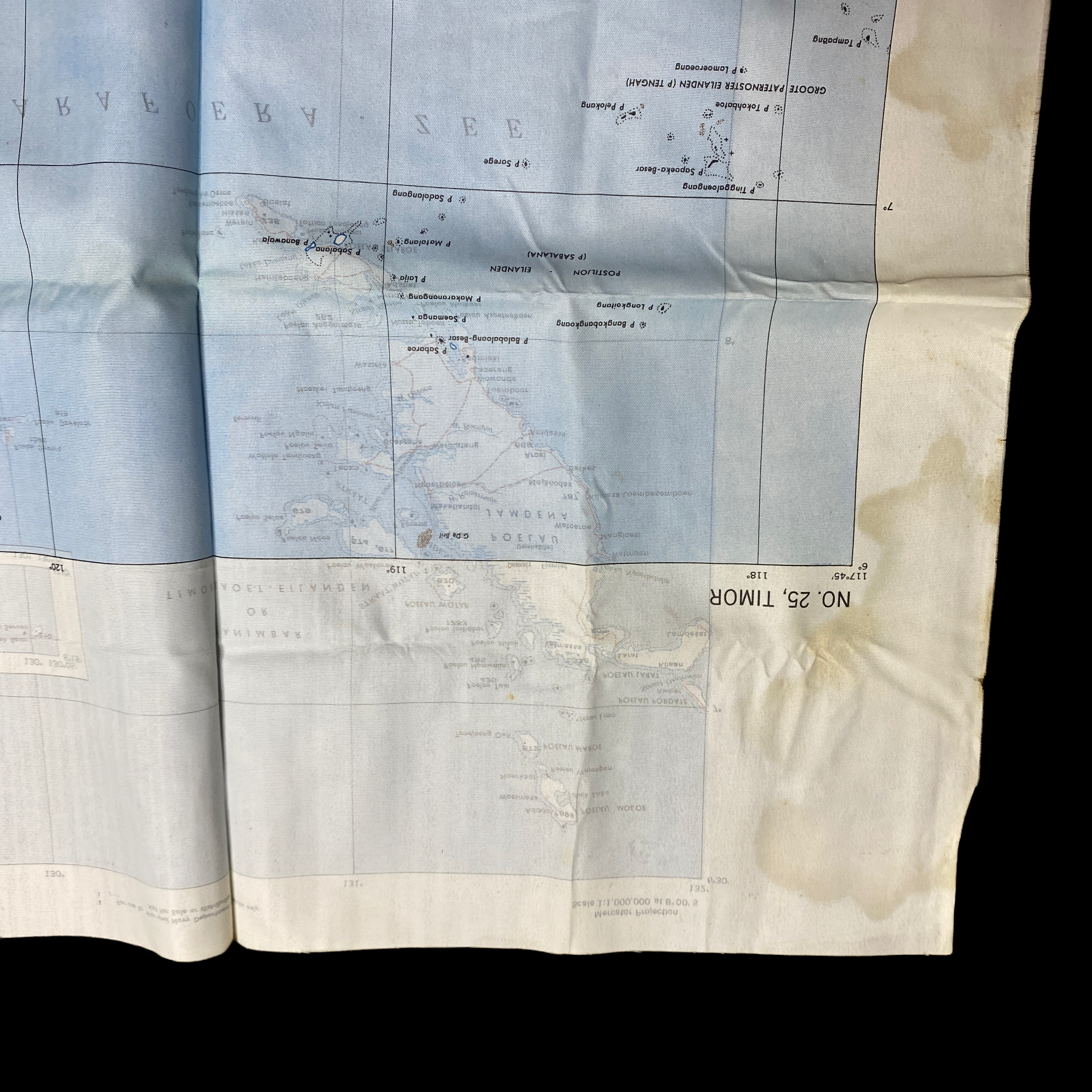
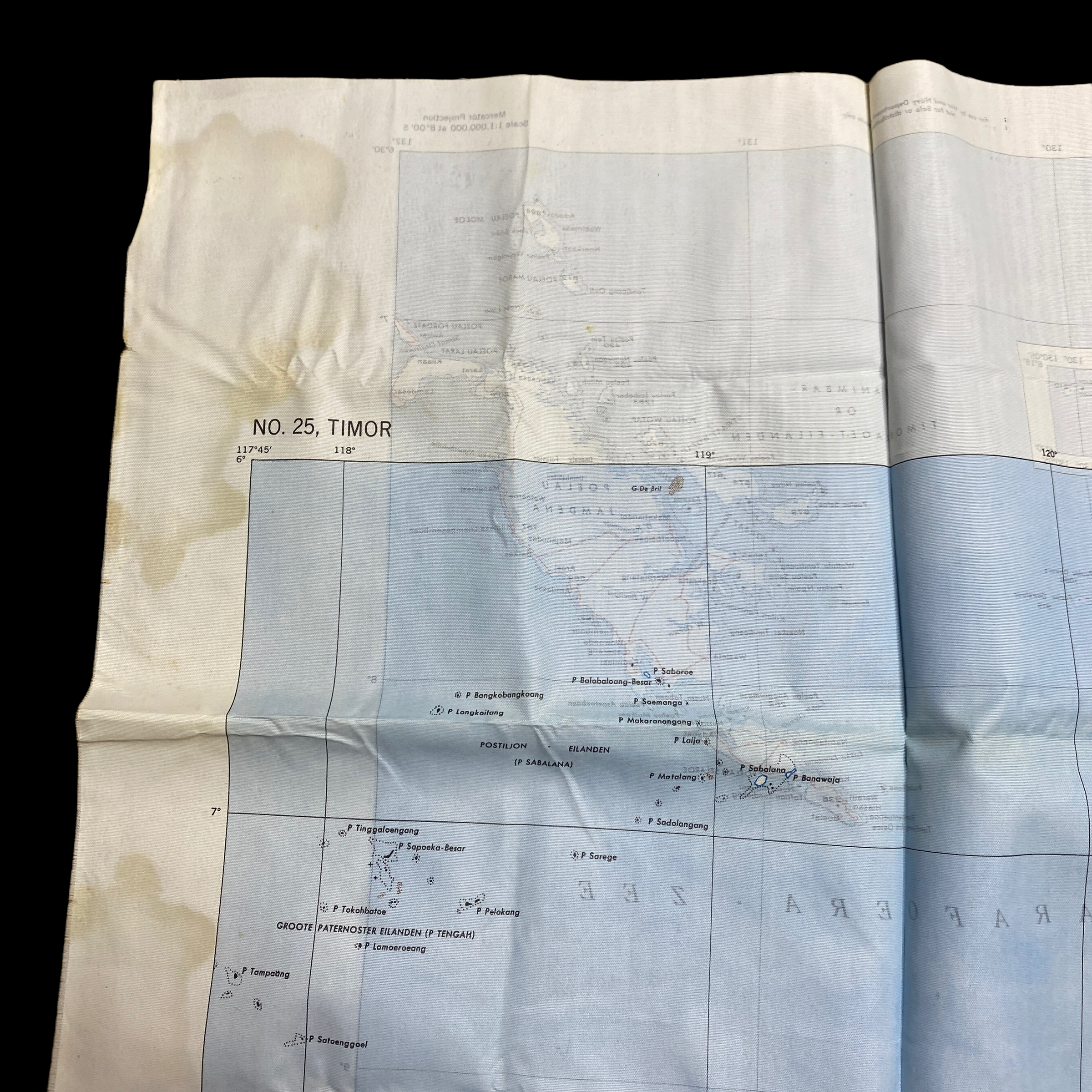
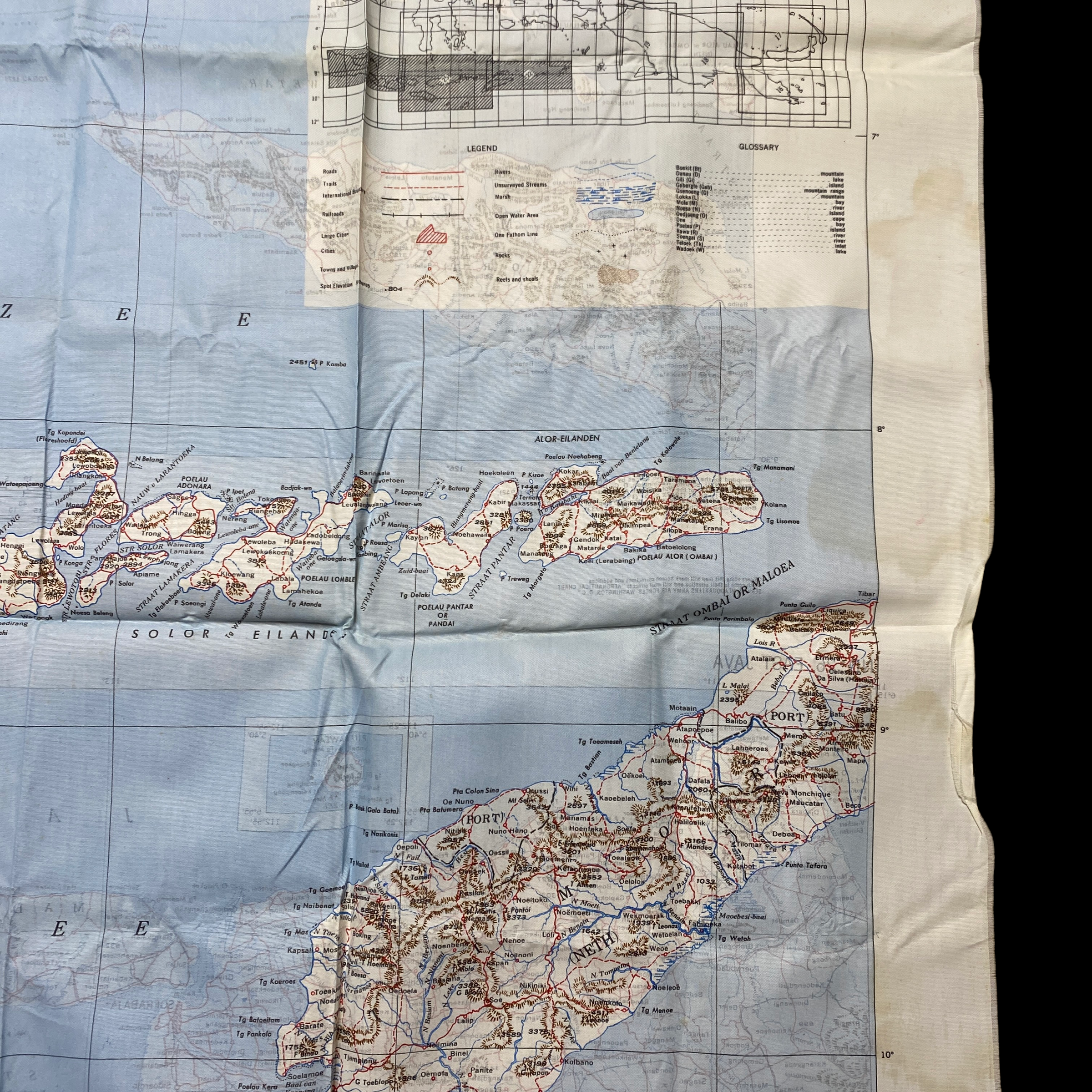
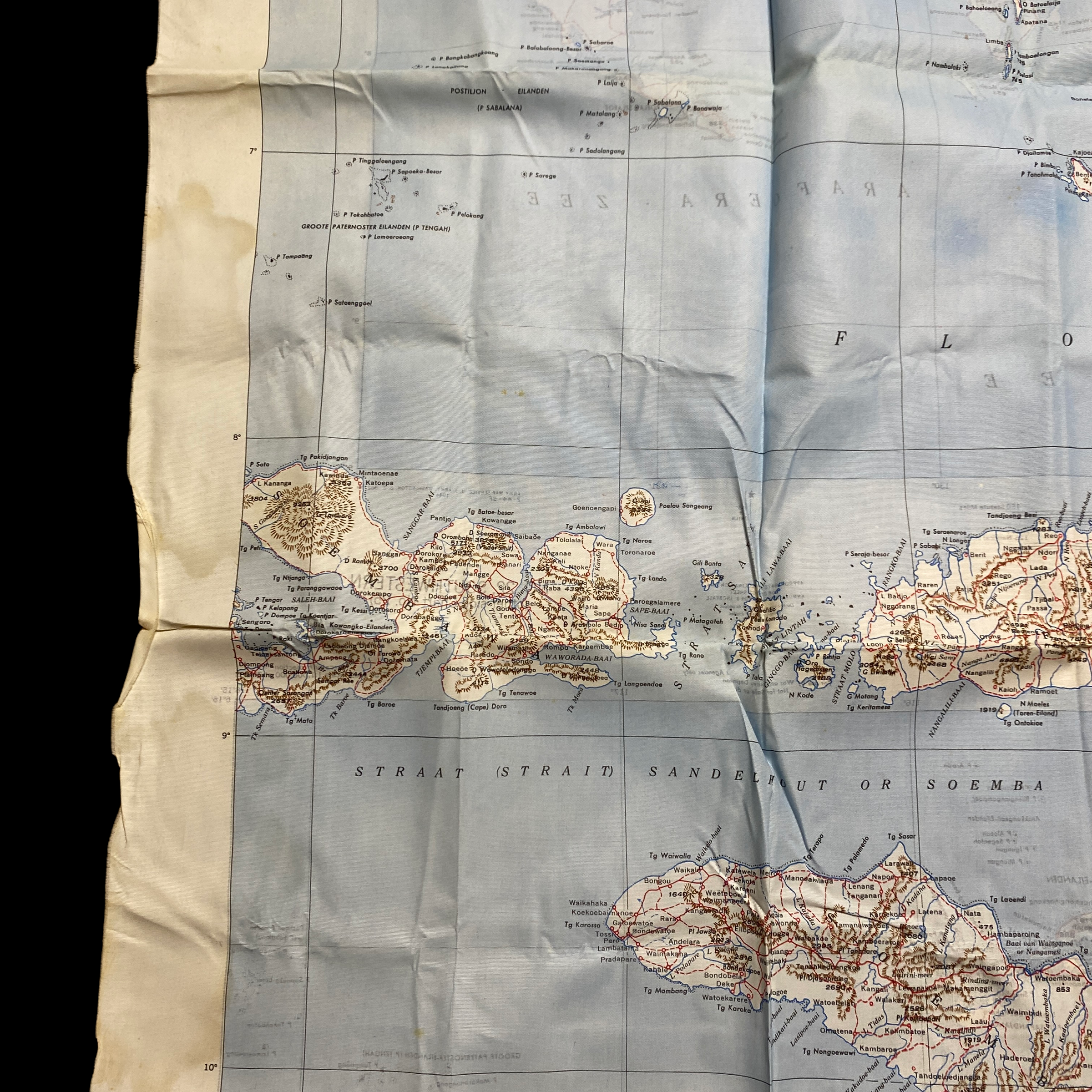

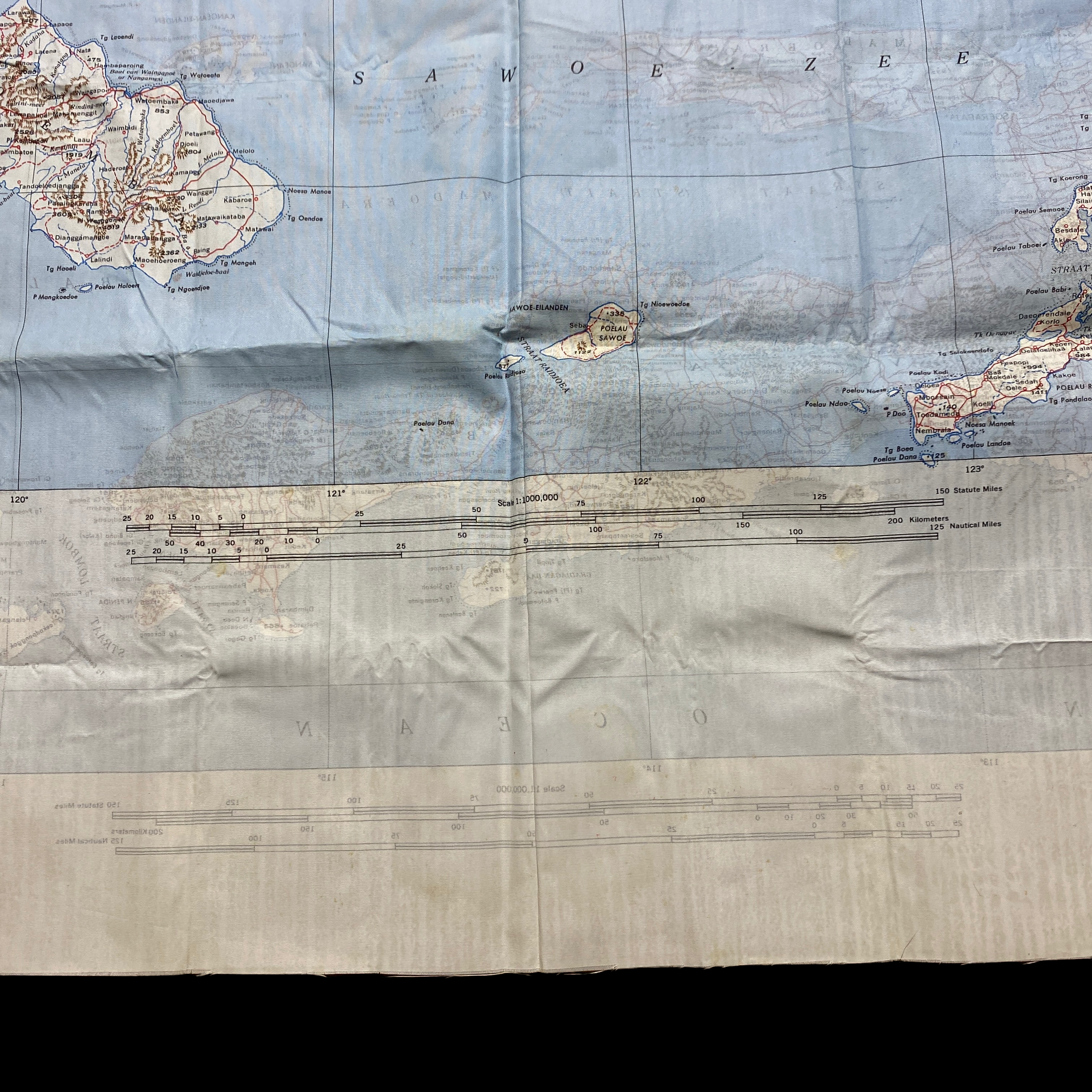



WWII Dutch East Indies Campaign British American Pilot Bailout Silk Survival Map Pacific Theater
Comes with hand-signed C.O.A.
This incredible and museum-grade WWII double sided pilot’s bail out silk map is shows the Dutch East Indies region of the Pacific Theater. This silk cloth chart does show signs of theater use and would have been carried by British and American pilots. These cloth charts were worn as neck scarves or stuffed in the pant/jacket pockets by pilots during WWII as part of their survival gear. During WWII these silk bailout maps were produced in varying quantities by the Allied forces on thin silk (waterproof) material. The idea was that if an Allied pilot’s plane was shot down behind enemy lines they should have a map to help him find his way to safety if he escaped or evade capture.
The first strikes against the Philippines, Wake, and Malaysia began December 8 followed by Guamon December 10. Guam fell the same day and Wake held out until the end of the month. In the Philippines, portions of the U.S. Navy Asiatic Fleet began to evacuate to Borneo while those American forces remaining behind entered into a six-month, losing battle to hold the islands. In early December, the Japanese had also occupied the Gilbert Islands and were preparing for landings at Rabaul, New Britain. In late January, Japan secured Borneo after the Naval Battle of Balikpapan (January 23-25). By February 15, Singapore had surrendered and southern Sumatra, the Celebes, Ambon, Timor and Rabaul were all in enemy hands.The Battle of the Java Sea (February 27) in which Langley (CV-1) was sunk, followed by the Battle of Sunda Strait (February 28 - March 1) secured the surrender of Java. Rangoon, the chief seaport of Burma, and the Andaman Islands, 250 miles south of Rangoon, were occupied by Japanese forces on March 8 and March 23, respectively. As well, the Japanese had landed at Lae and Salamaua on thePapua Peninsula in New Guinea and were conducting air strikes against Port Moresby, also on the Papua Peninsula,and Tulagi in the Solomon Islands. On May 6, 1942 the Philippines finally capitulated. Thus, within the first five months of 1942, Japan’s sphere of influence encompassed the Kuril Islands to the north, the Marianas, Marshalls,Gilberts, and Carolines in the Central Pacific, the Philippines, Indochina, Thailand, Burma, Malaysia, Borneo,Netherlands East Indies, and portions of China, New Guinea and the Bismarck Archipelago.
The small Allied air force could do little against greatly superior Japanese air power. Allied naval strength in thearea consisted of only 9 cruisers, 23 destroyers, and 36 submarines. Nevertheless, though no match for the vastlysuperior Japanese Fleet, the Allied warships attacked repeatedly. In the early dark hours of January 24, 4 Allied destroyers attacked a large convoy off Balikpapan, Borneo. In this, the Battle of Makassar Strait, the destroyers escaped unharmed after sinking 4 Japanese transports and a patrol ship and damaging other vessels. Subsequent engagements - the Battle of Lombok Strait (February 18-19) and the Battle of the Java Sea (February 27) were not as successful for the Allies. In the latter losses from Japanese air and naval attacks were so severe that the surviving Allied warships were withdrawn from the Java Sea to Tjilatjap (Chilachap) on the south coast of Java.On February 28, 2 Allied cruisers, the Houston and the Perth, which were attempting to escape southward through Soenda (now Sunda) Strait, suddenly ran into a huge Japanese invasion armada in the process of assaulting Batavia(now Djakarta). The cruisers were destroyed, but only after sinking 3 loaded Japanese transports.